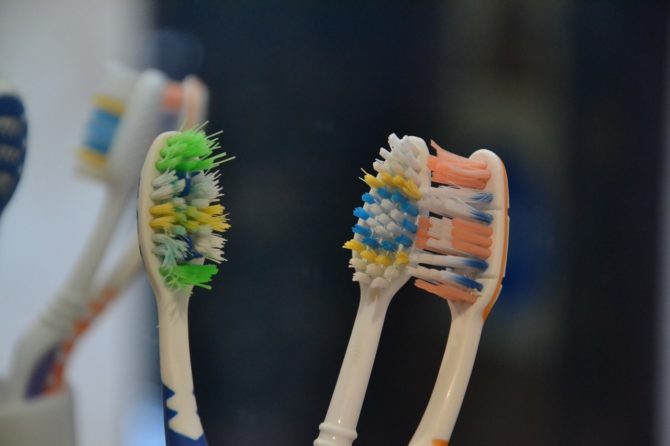Reasons To Change Toothbrush Once In Three Months
Do you remember the time when you have started brushing and flossing? Are you surprised to know that most of us are not properly brushing the teeth? Did you know proper brushing takes at least 2 minutes? What is the life of your toothbrush? What are the main Reasons To Change Toothbrush? Keep the four steps mentioned below on how to care for your mouth and gums:
- Brush at least for at least two minutes twice a day with fluoride toothpaste.
- Floss every day to maintain good dental hygiene.
- Use a little number of snacks each day.
- Visit the dentists every six months for the checkup.
Usually, it is easy to replace the worn-out shoes or faded clothes. But most of us are in a doubt on when to change the toothbrush. It depends on the usage, health. But before brushing again, ask yourself whether it is time for a new toothbrush? One of the Major Reasons Behind Tooth Pain is using worn-out toothbrush.
When to use a new toothbrush?

Toothbrush Brush Your Teeth Wash Brush Brushes
Change toothbrush in every 3 to 4 months. Get a new toothbrush if you are sick, especially if the brush is stored close to other toothbrushes. If you are in a doubt whether to purchase a new one, look at the bristles. If the bristles are frayed purchase a new one because it can no longer clean teeth as thoroughly. You can find Reasons to change toothbrush once in a quarter year in this post.
Types of Toothbrushes
- Two styles of toothbrush exist: manual toothbrush and electric toothbrush.
- The manual toothbrush is portable and ready to use every time you need it. You have the complete control over the pressure it puts on the teeth and gums.
- Electric toothbrush requires charging and is a bit more tiring thing to take along when travelling. However rotating movement of the bristles makes it easier to clean between teeth and gum line. Most of the electric toothbrushes have built-in sensors to make sure you brush enough and don’t press hard.
Maintaining The Tooth Brush
The American Dental Association tells to wash the toothbrush with water after you brush. Store the toothbrush in a vertical position so that the bristles can air dry. Storing toothbrush in a closed container lets the bacteria to grow, therefore it is best to let the bristles dry between each usage.
Reasons to change toothbrush
- After using the toothbrush for three months it doesn’t remain effective for cleaning the tooth surfaces.
- Studies reveal that new brush removes more plaque than one that is worn out.
- As bristles worn out they become prone to bacteria and fungal growth
- If you continue to use the toothbrush for more than three months dental problems like halitosis or bad breath arise.
- Worn out bristles lead to gum bleeding.
- It is advised to change toothbrush after you had an infection such as flu, mouth sores or a sore throat.
Worn out toothbrush could damage your gums
Fraying on the toothbrush can potentially damage the gums as well. Broken or bent bristles can wreak havoc on the gum tissue. This, in turn, causes small cuts, bleeding, open sores in the mouth.
Leads to Mouth Infections
Along with bacteria build up, studies reveal that it may develop gingivitis, halitosis or to other serious gum diseases. Maintaining a brush with taut bristles give you the effective cleaning capacity to keep your mouth germ-free.
Choosing the right Toothbrush
Find a toothbrush that’s the good fit for you, as there is a great deal of variety on the market. Consider the factors mentioned below:
- Size: Use a toothbrush with a head that allows you to access all areas of your mouth, especially behind molars and along the gum line.
- Bristles: Choose a toothbrush with soft nylon bristles.
- Disposable and Electric toothbrush: There is an effect in brushing with a disposable or electric toothbrush, so it is a matter of choice. Some electric toothbrush has the automatic timer to ensure that the brushing extended to 2 minutes.
How to extend the life of your toothbrush
Things to help your toothbrush lasts a bit longer.
- Rinse toothbrush under cold water after the use, remove excess toothpaste and debris.
- Store brush upright, in the open and make sure it does not touch each other.
- Use plastic cases to protect the brush while your travel
- Never share the brush with anyone.
Following the above steps, ensure that you and your family make most of your at-home dental routine by properly caring for and replacing toothbrushes.
Leave a reply
Leave a reply